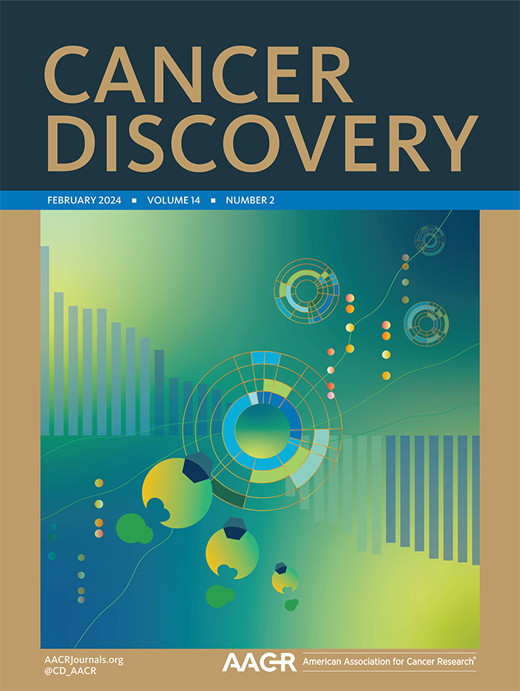癌前细胞启动胶质母细胞瘤进化并促进肿瘤内异质性
IF 29.7
1区 医学
Q1 ONCOLOGY
引用次数: 0
摘要
神经干细胞(NSCs)在脑室下区(SVZ)被确定为胶质母细胞瘤(GBM)中携带驱动突变的细胞起源,胶质母细胞瘤是最具破坏性的脑肿瘤,具有高度异质性。然而,有限数量的携带突变的NSCs顺序转化为具有高肿瘤内异质性的远端肿瘤的机制仍然知之甚少。在这项研究中,我们在自发的体细胞小鼠模型中发现了转录上不同类型的突变包藏癌前细胞,再现了人类GBM的进化,以及来自患者的无肿瘤SVZ组织。这些癌前细胞通过少突胶质细胞谱系规范出现,表现出独特的转录程序,涉及失调的翻译和细胞外基质重塑。随后,它们通过激活对胶质瘤形成至关重要的多个程序,产生异质肿瘤细胞群。我们的研究结果强调了癌前细胞在肿瘤进化和肿瘤内异质性中的关键作用,表明它们有可能成为GBM的新治疗靶点。本文章由计算机程序翻译,如有差异,请以英文原文为准。
Precancerous Cells Initiate Glioblastoma Evolution and Contribute to Intratumoral Heterogeneity
Neural stem cells (NSCs) in the subventricular zone (SVZ) are identified as cells-of-origin harboring driver mutations in glioblastoma (GBM), which is the most devastating brain tumor with highly heterogeneous nature. However, the sequential transformation of a limited number of mutation-harboring NSCs into a distant tumor with high intratumoral heterogeneity remains poorly understood. In this study, we have identified transcriptionally distinct types of mutation-harboring precancerous cells in our spontaneous, somatic mouse model recapitulating human GBM evolution as well as in tumor-free SVZ tissues from patients. These precancerous cells emerge via oligodendrocyte lineage specification, exhibiting unique transcriptional programs involving dysregulated translations and extracellular matrix remodeling. Subsequently, they give rise to heterogeneous tumor cell populations by activating multiple programs crucial for gliomagenesis. Our findings highlight the pivotal role of precancerous cells in tumor evolution and intratumoral heterogeneity, suggesting their potential as a novel therapeutic target for GBM.
求助全文
通过发布文献求助,成功后即可免费获取论文全文。
去求助
来源期刊

Cancer discovery
ONCOLOGY-
CiteScore
22.90
自引率
1.40%
发文量
838
审稿时长
6-12 weeks
期刊介绍:
Cancer Discovery publishes high-impact, peer-reviewed articles detailing significant advances in both research and clinical trials. Serving as a premier cancer information resource, the journal also features Review Articles, Perspectives, Commentaries, News stories, and Research Watch summaries to keep readers abreast of the latest findings in the field. Covering a wide range of topics, from laboratory research to clinical trials and epidemiologic studies, Cancer Discovery spans the entire spectrum of cancer research and medicine.
 求助内容:
求助内容: 应助结果提醒方式:
应助结果提醒方式:


